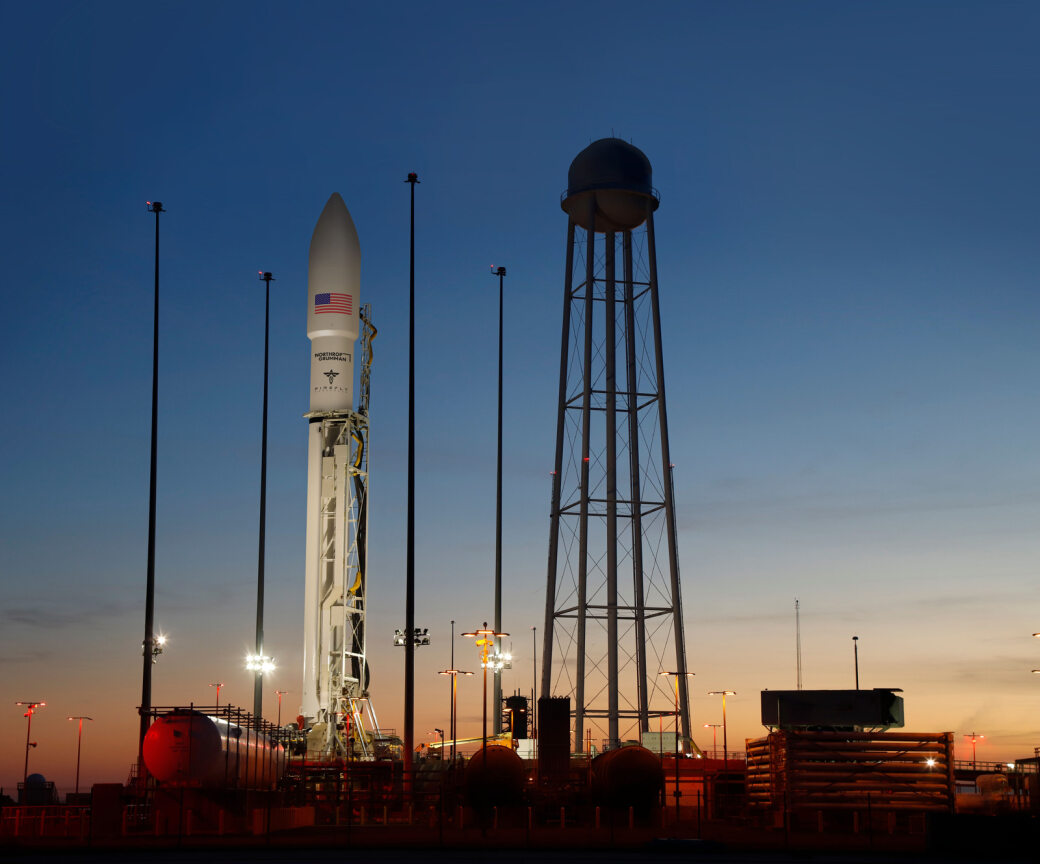Northrop Grumman illustration of its missile tracking satellites for the Space Development Agency’s Tracking Layer.
AFA 2023 — Northrop Grumman has tapped Tuscon-based startup GEOST to provide sensor payloads to protect the missile tracking satellites the defense behemoth is building for the Space Development Agency (SDA), GEOST announced Monday.
GEOST, a LightRidge Solutions company, makes electro-optical and infrared sensors for space applications. Under the contract, the firm will supply eight tiny Starlite sensors, each about the size of a soda can, to identify ground-based sources of interference; it will also supply an accompanying ground system. The payloads will equip some of Northrop Grumman’s satellites being built as part of SDA’s first operational Tracking Layer constellation in low Earth orbit, the release said.
In July 2022, the agency tapped L3 Harris and Northrop Grumman to each build 14 Tranche 1 Tracking Layer satellites, with L3 Harris’s award potentially worth some $700 million and Northrop Grumman’s potentially worth about $617 million. The Tranche 1 satellites are expected to launch in September 2024. The GEOST payloads will equip some of the
“GEOST’s approach to Space Protect and Defend (P&D) missions is characterized in our ‘See…Say…Act’ concept,” Josh Hartman, LightRidge Solutions chief growth and strategy officer, told Breaking Defense. “Collecting and reporting the data is not enough. Space systems must have the ability to see a threat, sound the alarm, and actuate a countermeasure with increasing autonomy and speed.”
SDA’s requirements for the Tranche 1 Tracking Layer did not originally include a sensor designed to help provide protect the satellites. However, its Sept. 6 solicitation for the follow-on Tranche 2 set of at least 54 satellites said some will be equipped a “directed energy sensor” that would be a “resiliency feature to protect against directed energy attack mechanisms” — suggesting that the data gathered could be used by Space Force operators to target the discovered sources of interference.
Hartman said he could not comment on the exact capabilities Starlite will bring, although he said the company is hopeful SDA will purchase more Starlites once they have proven themselves on Tranche 1.
As for the ground system, Hartman explained that it could be used to provide threat data gleaned by the Starlite sensors to users across the Defense Department and the Intelligence Community.
“The ground infrastructure for Starlite is planned to take in threat data from a network of heterogeneous sensors and is being designed in a modular capacity to feed the data to any Defense Department or Intelligence Community entity that has mission interest,” he said. “For example, we envision this data obviously benefiting the protection of the SDA missile warning and track architecture, but ultimately going to the NSDC [National Space Defense Center], the NSIC [National Space Intelligence Center], and others.”












